ANALYSING LABOUR-LIB DEM TACTICAL VOTING SINCE 1983
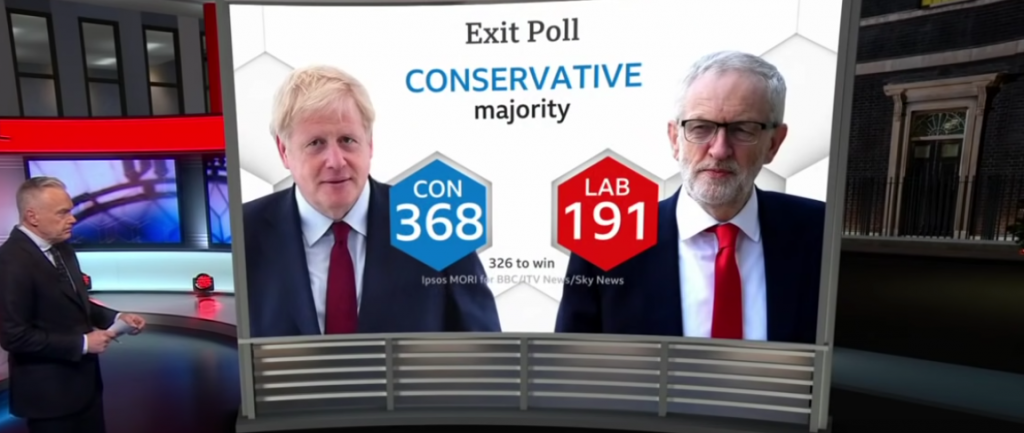
Following the stunning success for the Liberal Democrats at the North Shropshire by-election, former YouGov head, Peter Kellner, wrote in the Guardian:
Byelection campaigns develop their own momentum: tactical voting in general elections is never as great. But back in 1997, when Tony Blair and Paddy Ashdown led their respective parties, tactical shifts of just a few percentage points cost the Conservatives about 30 seats they would otherwise have held.
Nothing like that happened in 2019. Lib Dems could not bear the thought of helping Jeremy Corbyn – indeed some Lib Dem candidates report losing supporters to the Conservatives, to be sure of keeping Corbyn out of Downing Street. Jo Swinson, the then Lib Dem leader, was not actively disliked by Labour supporters but neither did she have the positive appeal of Ashdown two decades earlier.
Today, with Starmer and Ed Davey at the helms of their parties, tactical voting seems to be enjoying a revival. Suppose it has the same impact at the next election as in 1997. The Tories would have lost heavily then, even without tactical voting. Next time it could make the difference between the Conservatives having enough MPs to continue in office, or Johnson being replaced by Starmer, at the head of a minority Labour administration.
Let’s look at the data to see if Kellner’s claims hold up. The chart below shows the split of Labour and Lib Dem/Alliance votes in marginal seats (margin of victory of less than 10 percentage points) in which the Conservatives and Lib Dems were first and second (in either order). It also shows the number of seats meeting these criteria since 1983.
Even in 1983, the Alliance achieved 71.9% of the combined Labour-Alliance vote in the 31 Conservative-Alliance marginals. By 1992, the Lib Dems had increased this to 77.3%. It actually fell to 69.5% in 1997; however, this reflects the fact that many voters were unaware that they were in marginal seats in that election! It’s worth noting that the collapse in the Lib Dem vote in 2015 barely registers in this chart. Despite their overall share of the vote falling from 23.0% in 2010 to 7.9% in 2015, the Lib Dems still won over three quarters of the Labour-Lib Dem vote in the 13 Conservative-Lib Dem marginals.
In 2019, the Lib Dems won 80.8% of the combined Labour-Lib Dem vote in the 14 Conservative-Lib Dem marginals. This percentage has never been higher.
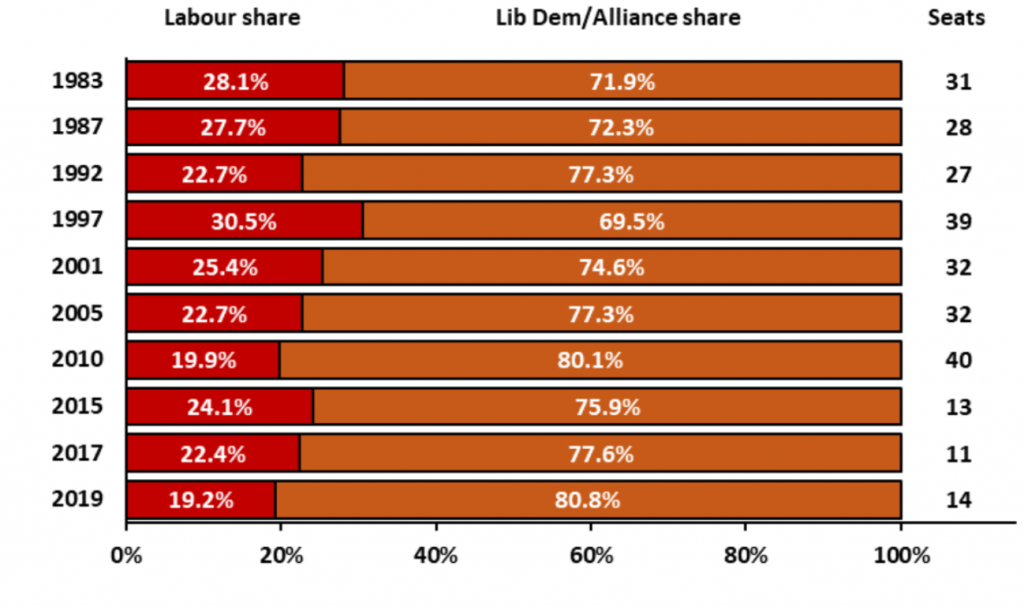
Another way to measure the extent of tactical voting is to compare the marginals to other seats. The chart below shows the difference between the Lib Dem/Alliance share of Labour-Lib Dem/Alliance votes in marginals and non-marginals. For example, in 1983 the Alliance achieved 66.9% of the Labour-Alliance vote in 252 non-marginal Conservative-Alliance seats and 71.9% in the 31 marginals, thus giving them an uplift of 4.9 percentage points in the marginals. In 2019, the uplift was 11.5 percentage points. It has only been higher in 2017 when it was 12.9 percentage points.
Whichever way you look at it, tactical voting for the Lib Dems was very much a factor in 2019.
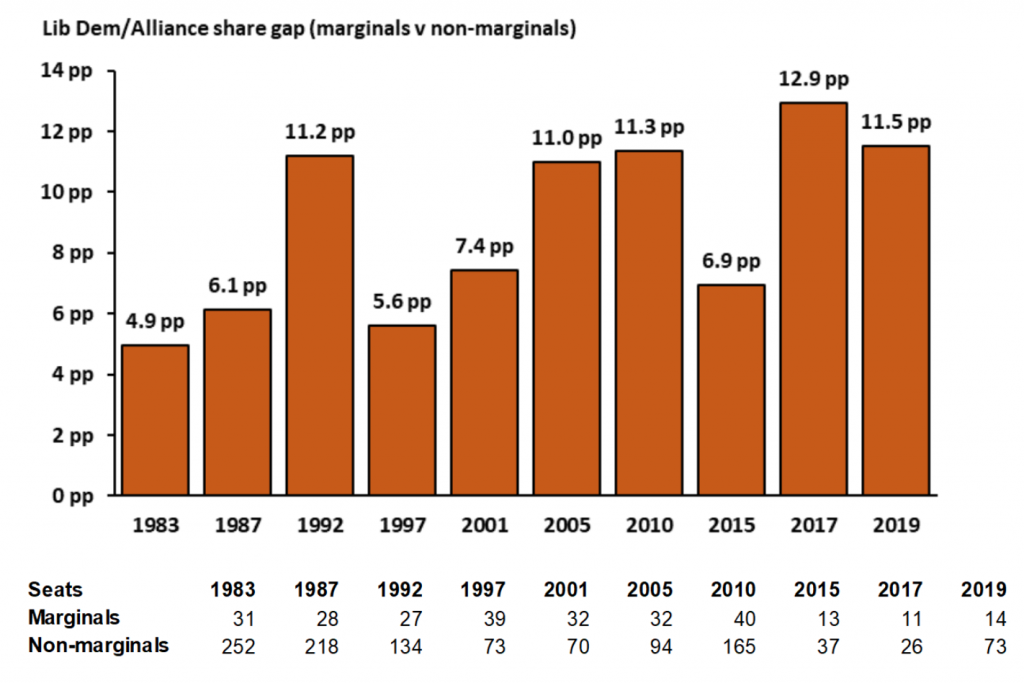
Let’s look at Conservative-Labour seats. As before, the chart below shows the split of Labour and Lib Dem/Alliance votes in marginal seats (margin of victory of less than 10 percentage points) in which the Conservatives and Labour were first and second (in either order). Having gone as high as 78.6% in 1992, the Labour share fell back to 68.1% in 2010. Unlike with the Conservative-Lib Dem marginals, the effect of the Lib Dem vote collapse in 2015 is very much visible here. In the last three elections, Labour have achieved over 87% of the Labour-Lib Dem vote in Conservative-Labour marginals.
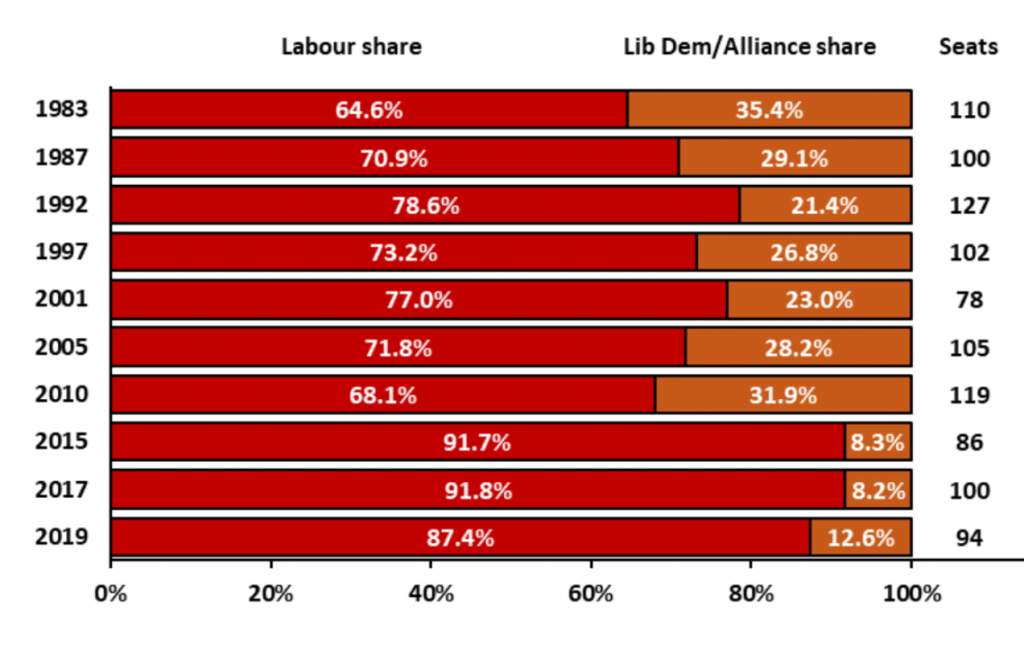
Looking at the difference between marginals and non-marginals, the outlier that is 1997 is shown with Labour registering 8.8 percentage points less of the Labour-Lib Dem vote in the marginals than in the non-marginals. Before 2015, there wasn’t much sign of Lib Dems voting tactically for Labour in marginal seats. Since then, however, Labour have achieved an uplift in the marginals of 5.9 percentage points in 2015, 3.2 percentage points in 2017, and 5.6 percentage points in 2019. Contrary to popular opinion, some Lib Dems were prepared to vote tactically for Jeremy Corbyn where it might have made a difference.
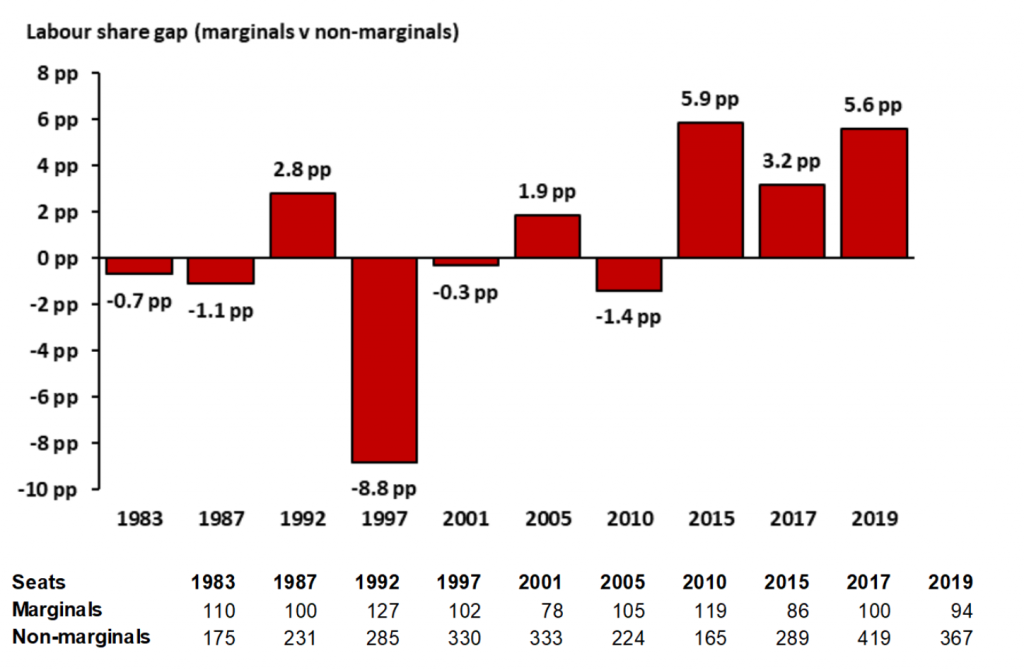
To go back to the Kellner quote, I think the data suggests that the Conservatives were fortunate not to do even worse in 1997 than they did. Furthermore, I think Labour and Lib Dem voters were very much prepared to vote tactically in 2019. Perhaps there is scope for tactical voting to go even further at the next election, which might take a few more seats off the Tories.
Kellner’s point about voters being scared off Labour or the Lib Dems by Jeremy Corbyn is, in my opinion, a much more important one. For the Conservatives to be removed from office, their vote share needs to fall quite considerably.
Tom Leveson Gower
Tom Leveson Gower posts on PB as TLG86